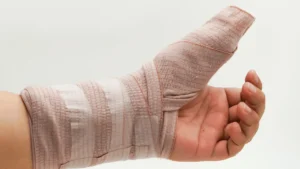Overview
Breaking a finger can be a painful and frustrating experience, but with proper diagnosis and treatment, healing can occur successfully. The fingers are delicate structures, essential for everyday tasks, and any injury to them can disrupt our daily activities. Understanding the symptoms, causes, and steps to recovery is crucial for a smooth healing process. This guide aims to provide an in-depth understanding of how to diagnose and recover from a broken finger.

Symptoms and Causes
Symptoms
A broken finger can exhibit several noticeable symptoms. These may include:
- Intense pain at the site of the break
- Swelling and bruising around the affected area
- Difficulty moving or bending the finger
- An obvious deformity or misalignment
If you experience any of these symptoms after injuring your finger, it is crucial to seek medical attention promptly.
Causes
A broken finger is typically caused by a direct blow to the finger or a forceful twisting motion. Common causes of broken fingers include:
- Sports injuries, particularly those involving contact or high impact
- Accidents, such as falls or crushing injuries
- Violent impacts or crushing accidents during manual labor
Diagnosis and Tests
When diagnosing a broken finger, a healthcare professional will usually perform a thorough physical examination along with imaging tests. The doctor will examine the finger for swelling, deformity, and tenderness. X-rays are typically ordered to confirm the diagnosis and determine the extent of the fracture.
Management and Treatment
The treatment for a broken finger depends on the severity of the fracture. In most cases, treatment involves immobilizing the finger with a splint or a cast to promote proper healing. Pain relief medication may be recommended to manage discomfort during the recovery process. Physical therapy exercises might also be prescribed to improve range of motion and strengthen the finger once it has healed.
Prevention
While it is impossible to completely eliminate the risk of breaking a finger, certain precautions can help reduce the likelihood of injury. Some preventive measures include:
- Wearing appropriate protective gear and padding during sports or activities with a higher risk of finger injuries
- Using caution when handling heavy objects or machinery
- Maintaining good hand and finger strength through regular exercises
Outlook / Prognosis
The outlook for a broken finger is generally positive, especially with timely and appropriate treatment. Following the prescribed treatment plan and taking proper care of the injured finger can greatly contribute to successful healing. However, the length of recovery may vary depending on the complexity of the fracture and overall health of the individual. It is essential to seek medical advice for an accurate prognosis and guidance throughout the healing process.
Frequently Asked Questions
1. Can a broken finger heal without medical intervention?
In some cases, a minor fracture may heal on its own without medical intervention. However, it is crucial to have a medical professional evaluate the injury to determine the best course of action and ensure proper healing.
2. Is it normal for my finger to be stiff after it has healed?
Stiffness in the finger after it has healed is not uncommon. Physical therapy exercises can help restore flexibility and range of motion. Consult with a healthcare professional for guidance on specific exercises that are suitable for your situation.
3. How long does it take for a broken finger to heal?
The healing time for a broken finger varies depending on the severity of the fracture and the individual’s overall health. Generally, it takes around four to six weeks for a broken finger to heal, but it can take longer for more complex fractures. Regular follow-ups with a healthcare professional are essential to monitor the progress of healing.
4. Can I continue to use my hand while my finger is healing?
It is important to limit the use of the injured hand to avoid further damage and promote optimal healing. Resting the affected finger and following the doctor’s instructions regarding limitations on activities will aid in the recovery process.
5. What are the potential complications of a broken finger?
Some potential complications of a broken finger include improper healing resulting in deformity or limited range of motion, infection at the site of the fracture, and the development of arthritis in the affected finger joint. Seeking prompt medical attention and adhering to the recommended treatment plan can help reduce the risk of complications.
Conclusion
Healing a broken finger requires proper diagnosis, treatment, and care. Recognizing the symptoms and causes of a broken finger is crucial for seeking timely medical attention. Through the use of physical examination and diagnostic imaging, healthcare professionals can determine the extent of the fracture and recommend the appropriate management plan. Following the prescribed treatment, engaging in physical therapy exercises, and taking preventive measures can contribute to successful recovery and ensure a positive prognosis. Remember to consult with a medical professional for personalized advice and guidance throughout the healing process.